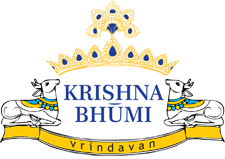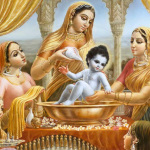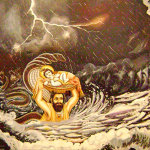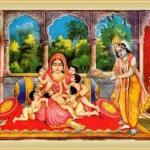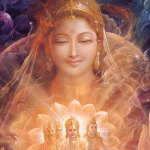How Brajwasis are celebrating Holi in 2018: Important dates
India is known for her vibrant culture, beautiful festivals, and rich traditions. But there is hardly anything better than Holi that captures the colourful facet of the country. And there is hardly a better place than Mathura-Vrindavan to celebrate the festival of colours.
The Braj area, where Sri Krishna spent His childhood, has many beautiful traditions leading up to Rangpanchami. Legend has it that Holi began as Krishna, who was frustrated with His dark complexion, smeared colours on Radha and other gopis. This beautiful story between the two divine lovers has given rise to many traditions that the Brajwasis have carefully nurtured and kept alive even today.
While the rest of India celebrates Holi on 2 March this year, Brajwasis have already begun celebrating their most colourful festival. Ramanreti, Gokul Holi on 19 February marked the advent of the festival.
Here are the other important dates:
Date – Event
23 Feb – Nandgaon Phag Amantran Utsav
23 Feb – Barsana Laddu Holi
24 Feb – Barsana Lathmar Holi
25 Feb – Nandgaon Lathmar Holi
26 Feb – Sri Krishna Janmabhoomi ki Holi
26 Feb – Vrindavan ki Holi
27 Feb – Chharimar Holi, Gokul
1 March -Holika Dahan, Phalain ka Panda
2 March -Dwarkadhish Holi, Chaturvedi Samaj ka Dola
3 March -Dauji ka Huranga, Jav ka Huranga, Nandgaon ka Huranga
3 March -Mukhrai ka Charkula
4 March -Baithan ka Huranga, Giroh ka Huranga
The experience of Holi in Braj is something to cherish for life. People from all across the world travel to Vrindavan during this time, smear one another with colour, and celebrate their love for Krishna.
It is a festival to forget and forgive, to soak in the magic of the Vrindavan atmosphere, and to celebrate divine love.
Radhe Radhe!
Is Radha’s love for Krishna the highest form of love?
The love between Radha and Krishna is the basis of many stories that have found their way through the pages of history and into the heart of millions of devotees. But many wonder why, despite being so deeply in love, they never marry. However, the real question should not be why they never marry; the real question should be how, despite not marrying, they remain so much devoted to one another. Accordingly to a version, during the last phase of her life, Radharani willingly worked as a maid in Krishna’s palace, just to be close to Him.
To understand the true nature of this divine love, one must acknowledge the fact that when we talk about Radha and Krishna, we cannot place them on the same plane as we put us, mere mortals. Talking about Radha and Krishna, Srila Prabhupada said that we must “understand the relationship between Radha and Krishna very carefully; it’s not like some mundane love affair between a young boy and a young girl.” He also observed that the love between Radha and Krishna is ‘parakiya’, but it is not in the same sense we know it to be. Srila Prabhupada explains, “…in the spiritual world, the highest, topmost level of love is parakiya. Parakiya means love – not by marriage, but by friendship. There, it is pure”.
The love that Radharani has for Krishna is, in fact, devotion in the highest form. Many consider Radha to be the greatest devotee of Lord Krishna and believe her to be the ‘Devotional Energy’ of Sri Krishna. This is one of the reasons why we always say Radha Krishna, putting her name before the name of the Supreme Lord. If we take away the ‘R’ from ‘Radha Krishna’, we are left with ‘adha’ Krishna, that is. Half Krishna— it is Radha’s presence that completes Krishna. Her love for Krishna is the highest state of spiritual ecstasy or Maha Bhaav.
In Chapter 18, Shlokas (verses) 65-66 of Gita, Krishna says to Arjuna, “Let your mind be constantly directed towards me; be devoted to me; dedicate all your actions to me; prostrate yourself before me; over and above the claims of all Dharmas (duties) is complete surrender to me and me alone”. That is what Radharani did all her life—even when she was away from Krishna, even when she was married to someone else. She was immersed in her divine love for Krishna, which was also, the greatest form of devotion.
Radhe Radhe!
Why is Shiva worshipped as a gopi in Vrindavan?
This year, Mahashivratri will be celebrated on 13 and 14 February. In Vrindavan, the temples dedicated to Lord Shiva such as Gopeshwar, Gokuleshwar, Govindeshwar, Bankhandeshwar, and Taleshwar draw a huge number of Shiva devotees.
Legend has it that Lord Shiva is the first Vaishnav ever because He is a devotee of Lord Vishnu whose avatar is Lord Krishna. In fact, many believe that Lord Vishnu too is an ardent devotee of Lord Shiva.
Ages back in the Dwapara Yuga, the town of Vrindavan witnessed something that stands testimony to Lord Shiva’s profound love for Krishna. In fact, it was this incident that gave rise to the feminine form of Lord Shiva, the form in which He is worshipped in the Gopeshwar Temple in Vrindavan even today.
This happened on a beautiful full moon night when Krishna along with Radha and His sakhis were performing Raas Leela on the banks of Yamuna. Keen on being a part of the Leela, Lord Shiva and His wife, goddess Parvati, visited Vrindavan. However, while Parvati was allowed into the Raasmandal, Vrinda Devi stopped Lord Shiva from entering the town. She explained that the Raas Leela was a tribute to Radha and was an attempt to please her. This is why sakhibhav was necessary. Being a woman, Parvati inherently had the sakhibhav while Lord Shiva didn’t.
Lord Shiva then waited outside Vrindavan, but so keen was His desire to participate in Krishna’s transcendental dance, that He meditated about Radha. Radharani was pleased by this and sent her closest friend Lalita to bring Shiva. When Lalita met Shiva, she told Him everything about sakhibhav and how the only way for Him to attain it was to take a dip in the holy Yamuna.
Shiva took this dip and emerged as a beautiful damsel. He entered the Raasmandal in this form but Krishna immediately recognised Him and hailed Him as Gopeshwar. Even today, Lord Shiva is worshipped every evening from 5 pm to 9 pm in this feminine form in the Gopeshwar Temple, a temple where the Shiva linga is believed to have been established by the gopis themselves. It is also believed that the gopis prayed to Gopeshwar for the fulfillment of their desire of getting Krishna as their husband.
The next time you visit Vrindavan, spend at least an evening in the Gopeshwar Temple when the Shiva linga is dressed as a gopi and special shringar ceremonies are performed.
Radhe Radhe!
12 DEITIES OF VRINDAVAN IN ONE PLACE: HERE IS A CALENDAR TO PRESERVE
How would you feel if you woke up every morning and have a darshan of Bihariji? Or if you could set your eyes on Shri Madan Mohan whenever you wished to?
For any Krishna bhakt, that would be a dream come true. But this dream seldom turns real if one is not in Vrindavan. Even when you are, it is not possible to have all the darshans, all the time.
The best alternative is to have a photograph of the Lord in His beautiful forms in the various temples of Vrindavan Dham. The only problem is that most of the temples here prohibit photography inside the temple premises because shutter sounds or flash lights are not desirable in a place that people associate with spirituality and serenity.
The Infinity Group understands a Krishna bhakt’s desire too well. That is why, this year, the Group has published a New Year calendar that is a eulogy to the deities of the 12 leading temples of Vrindavan. Each month features a beautiful image of Sri Krishna and narrates a brief story about the respective temple. The images of the deities in the calendar for the twelve consecutive months include Shri Radha Vrindavan Chandraodaya, Shri Banke Bihari, Shri Radha Vallabh, Shri Radha Shyamsunder, Shri Radha Damodar, Shri Radha Raman, Shri Radha Madan Mohan, Shri Radha Govind Dev, Shri Radha Gopinath, Shri Radha Gokulanand, Shri Gopeshwar Mahadev, and Shri Krishna Balram (ISKCON).
Shri Vikram Bhuwalka, the Marketing Manager of Krishna Bhumi said, “In this calendar, we are showcasing some of the revered deities of Vrindavan, so as to bring the devotees the Divine presence all through the year at their home and offices. The collection has been thoughtfully put together for the devotees staying far from Vrindavan to bring their consciousness to the Dham by having darshan of the presiding deities of Shri Dham Vrindavan.”
You can now download the calendar and keep it in your home or office for daily darshan. Here is your link:
Download Now
Stay blessed with Krishna’s grace. Serve the Lord in His own land for 7 days every year. Our Krishnabhumi Holydays membership makes that possible for you. You can not only stay in your own apartment in Vrindavan but can also devote your entire time to the Lord as we take care of all the aspects of your Vrindavan stay through our concierge service. Contact us to know more about the membership details.
Radhe Radhe!
Why is there a curtain in front of Bihariji?
If you ever visit the Banke Bihari temple in Vrindavan, you will see that there is a curtain between Bihariji and His devotees. The priests draw the curtain every few minutes. Have you wondered what gave birth to this tradition?
Legend has it that once a princess from Rajasthan visited the Banke Bihari temple. She belonged to one of the ancient kingdoms that ruled over this region and visited the temple to worship the Lord. However, as soon as the princess set her eyes on the beautiful all-black idol of Bihariji, she lost herself in divine love. She watched the Lord with rapt attention and wanted to be with Him forever in Vrindavan.
But that couldn’t happen.
The princess had her own duties towards the kingdom and was dragged to the palace. Even when away from Vrindavan, not a day passed when the princess did not think of Krishna and yearned to be with Him in Vrindavan.
Lord Banke Bihari wasn’t oblivious to the princess’ love and devotion and did something that no one had ever seen before.
One day, the priest of the Banke Bihari temple found that the idol was missing. A desperate search followed. After looking for the idol everywhere, it was finally found at the palace of the Rajasthani princess, the same person who had visited the temple and wanted to be in Vrindavan with the Lord. It is believed that Bihariji was moved by the devotion of His bhakt, the princess, and left His temple to visit His devotee.
The idol of Bihariji was reinstalled in the temple but something else was done. A curtain was introduced between the idol and the devotees. Even today, priests draw this curtain after regular intervals to break the spell that Bihariji’s beauty cast on His devotees. The curtain ensures that the devotees cannot look at the Lord for a long time at a stretch and be overpowered by divine love.
Radhe Radhe!
How Holi Began in Braj
Being in Vrindavan during Holi is a divine experience in itself. People from all over the world visit the place to celebrate the festival of colours the way the Brajwasis do it. However, have you ever wondered what went behind making the festival what it is today?
Legend has it that Krishna, frustrated by his own dark complexion, complained to his mother that it is only unfair that he was so dark and Radha was so fair. Hearing this, Mother Yashoda came up with a unique solution. She playfully asked Krishna to smear colours on Radha. Krishna loved this idea and went from his village Nandgaon to Barsana (where Radha lived) and smeared colours not only on Radha but also on the other gopis. It is also said that the women of Barsana took offence at this and beat up the men visiting from Nandgaon.
Brajwasis have kept this tradition alive in the unique way they play Holi.
Barsana, for instance, indulges in Lathmar Holi where, following the legend, men from Nandgaon visit the women of Barsana with gulal. They also carry padded shields to counter the sticks or lathths that the women of Barsana playfully hurl at them. Lathmar Holi is celebrated roughly a week before the actual Holi.
According to another story, Radha and Krishna first played Holi with flowers. Even today, the Banke Bihari temple celebrates Phoolon-wali Holi, that is, a Holi played with flowers. Priests of the temple throw flowers at the devotees after the gates are opened. Phoolon-wali Holi is also played at Gulal Kund near Govardhan Mountain after the enactment of Raasleela by the locals.
Holi in Vrindavan is beautiful, but it is also something that you need to experience in order to understand the essence of the festival. If you have never been to Vrindavan during Holi, you have not seen Vrindavan at its beautiful best. Come, get drenched in the colours of love. Feel the presence of Krishna in His own land. Take a trip back in time and re-live a festival the way the Lord Himself played it.
Radhe Radhe!
